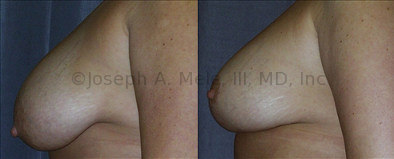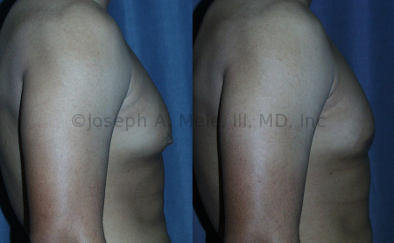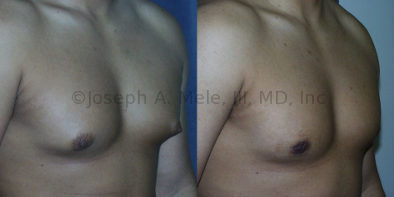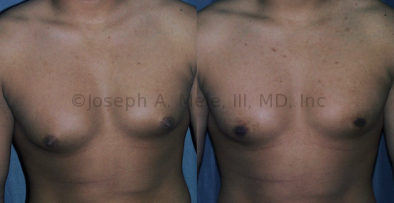Areola Reduction is an outpatient procedure that reduces the diameter of the areolae, plural for areola. It is frequently performed under local anesthesia, though it can also be performed under local with sedation or general anesthesia. It does not affect the nipple, or the rest of the breast, and should not interfere with breast feeding.
Areola Reduction can be performed by itself, or can be combined with other breast enhancing procedures. For women, Areolar Reduction is most frequently performed as part of a breast lift or breast reduction. For men, Areolar Reduction is most frequently performed as part of gynecomastia reduction.
During Areola Reduction Surgery, the outer edge of the areola is reduced, and the non-pigmented skin of the breast is advanced toward the nipple. This leaves a circumareolar scar along the outer edge of the colored areolar skin. The color change at the edge of the areolae helps to disguise the scar, making it more difficult to discern. If a free nipple graft is performed, areolar reduction can be performed on the graft, before it is replaced on the chest. Free nipple grafts are not usually performed for women because of the loss of sensation. Free nipple grafts are most common for men after massive weight loss, when the nipple needs to be moved a lot higher on the chest, and the breast volume needs to be minimized.
Areola Reduction Before and After Photos
(Men & Women)










The best Areola Reduction results are obtained by paying attention to the details. Male and female nipples and areolae are different in size, shape and location. The female areolae are larger, round, located on the breasts’ axis and ideally are located on the most anterior part of the breast. The male areola tends to be smaller, oval, more lateral and located lower on the chest. With gynecomastia (male breast enlargement), the areola is frequently enlarged into a rounder and more feminine, so Areola Reduction is often part of the gynecomastia reduction.